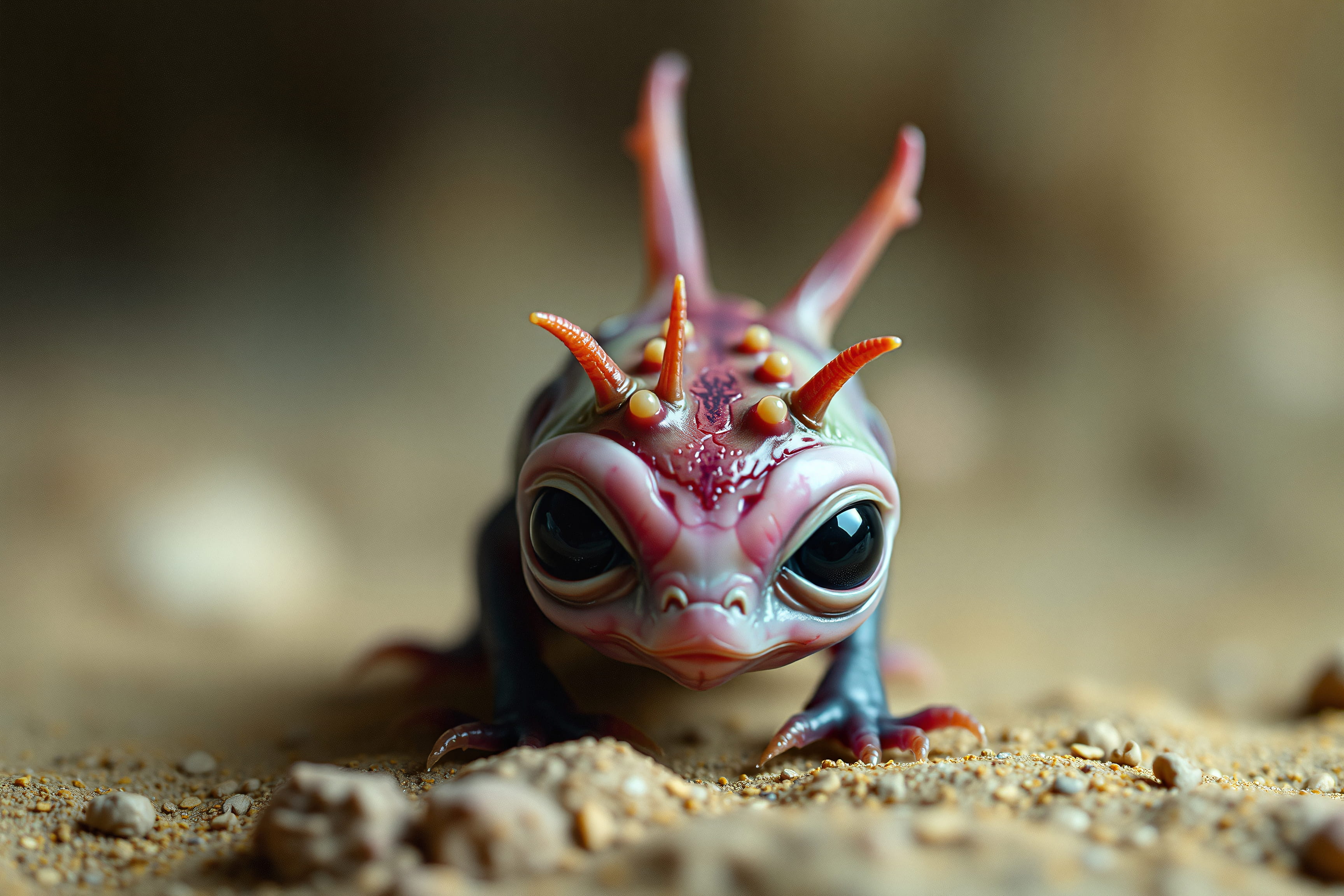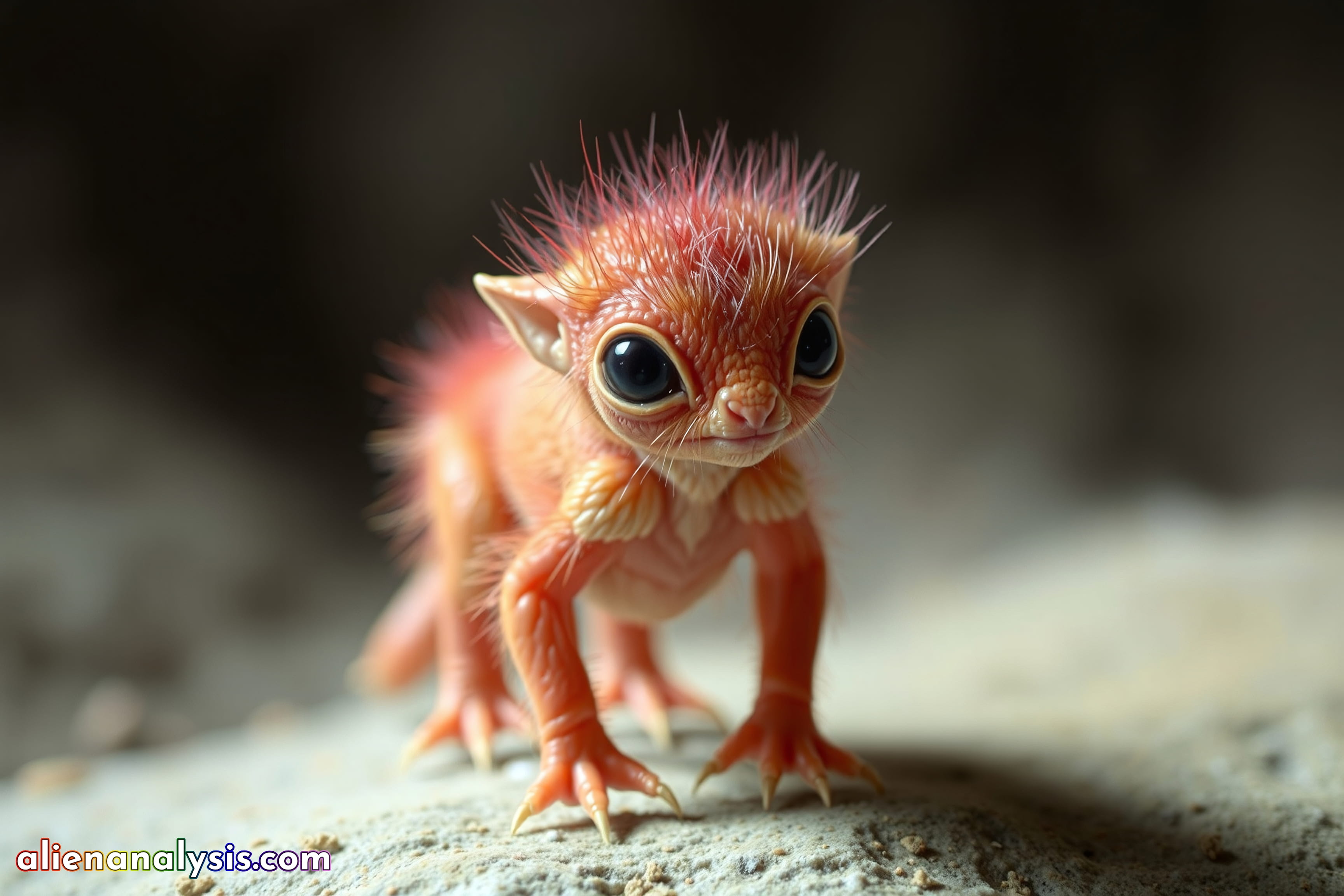
Pinnatigravis

The entity depicted in the image appears to be a juvenile member of a species that could be classified within the genus Pinnatigravis, meaning "feathered crawler." This classification is based on the being's distinctive bristle-like features and its quadrupedal stance.
Morphological Characteristics:
Size and Proportions: This creature is small and appears to be in a juvenile or infant stage of development. Its large eyes, relative to the size of its head and body, suggest that it is still growing and that its sensory organs are crucial for survival at this stage.
Eyes: The large, dark eyes are likely adapted for seeing in low-light environments, a common trait among juvenile creatures that need to remain vigilant for predators. These eyes might provide a wide field of vision, allowing the creature to quickly detect movement in its surroundings.
Bristle-Like Structures: The most distinctive feature of this being is the presence of fine, hair-like structures covering its body, particularly on its head and back. These bristles might serve multiple functions:
- Sensory: The bristles could be highly sensitive, allowing the creature to detect changes in its environment, such as shifts in air currents or the presence of nearby organisms.
- Protection: These structures might deter predators by making the creature appear larger or more difficult to swallow.
- Temperature Regulation: The bristles might also help in regulating body temperature by trapping air close to the skin, providing insulation in cooler environments.
Limb Structure: The being has four limbs, each ending in sharp, claw-like digits. These claws suggest a creature adapted for climbing, digging, or gripping various surfaces, which would be advantageous in a variety of terrains, from rocky outcrops to dense vegetation.
Skin and Coloration: The skin is smooth and slightly translucent, with a warm, pinkish hue. This coloration could serve as camouflage in environments with similar tones, such as sandy or rocky landscapes. The skin's texture might also be an adaptation to the creature's habitat, providing flexibility and protection as it navigates its surroundings.
Behavioral and Environmental Adaptations:
Habitat: Pinnatigravis likely inhabits environments where its small size and agility are essential for survival. These could include rocky crevices, dense underbrush, or other areas where it can use its claws to climb and its bristles to sense potential threats or prey. The creature’s morphology suggests that it is adapted to both terrestrial and possibly arboreal habitats.
Diet: As a juvenile, this being might have an omnivorous diet, feeding on small insects, plants, or other easily digestible food sources. Its sharp claws could be used to dig for roots or capture small prey, while its large eyes help it hunt during dawn or dusk when light levels are low.
Social Behavior: The creature’s bristle-like structures and expressive eyes might play a role in social communication, allowing it to signal to others of its kind through changes in posture or movement. As a juvenile, it is likely to stay close to others of its species, learning from them and gaining protection through numbers.
Conclusion:
The Pinnatigravis species represents a highly adaptable, juvenile life form that has evolved to thrive in challenging environments where agility, sensory awareness, and camouflage are key to survival. This creature's physical traits suggest it is in a crucial developmental stage, honing the skills it will need as it matures. As it grows, it may develop more pronounced features, such as thicker bristles or larger claws, that will enable it to take on a more active role within its ecosystem. This being is likely a quick, agile, and perceptive creature, well-suited to a life that requires constant vigilance and adaptability.